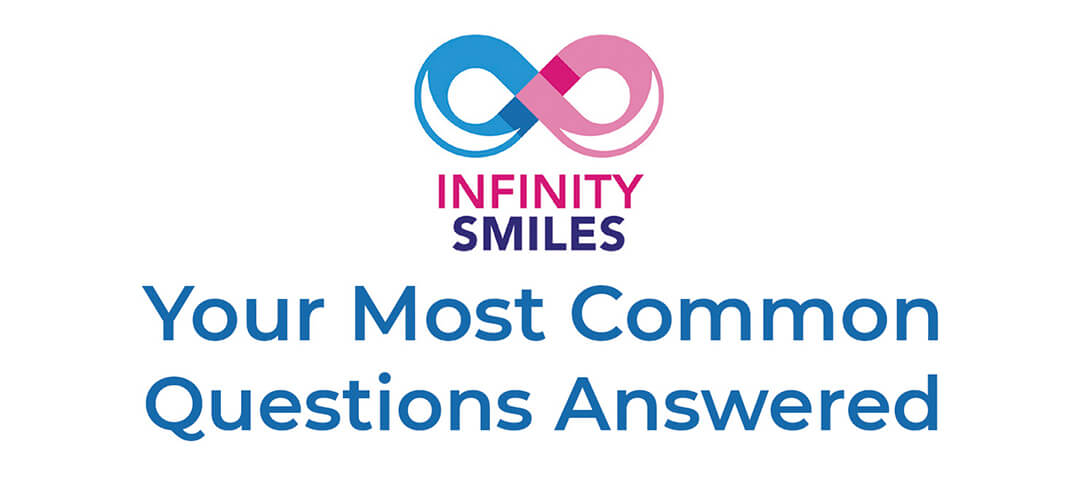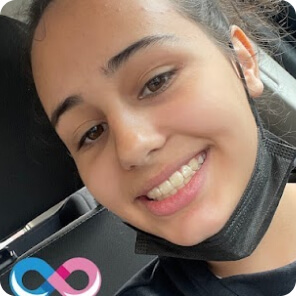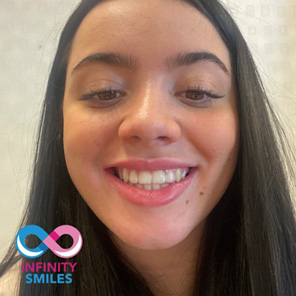How long do you need braces for?
Each patient is unique and the level of dental treatment they require will vary, meaning there is no one set length of time you might need braces for. However, there are a few main factors that can help to determine how long you will need to have braces for.
Feb 12, 2022

- Age- children often see quicker results than adults, studies have shown that the sooner someone has braces put in place, the faster the treatment will be.
- The amount of correction that is needed- the more work that is needed to effectively align your teeth, the longer it is likely to take. Also, treatment times can depend on how quickly your body responds to the brace.
- Your bite- the way your top teeth and bottom teeth align is known as your bite. Your bite can sometimes not line up as it should, and so you may need treatment for a type of bite such as an open bite, deep bite, underbite, or cross bite. Treating a bite with braces can take longer than just treating misaligned teeth with braces.
- The type of braces you have selected or need- treatment options differ based on each patient’s individual needs and circumstances. Choices for braces can depend on style, affordability, comfort, and other factors.
What to expect when you’re getting braces
After your mouth has been examined, x-rays and photos will be taken, and plaster models of your teeth made if necessary. These can help your orthodontist estimate how long you may need to wear braces. Keep in mind it is impossible to predict an exact timeline, but there are some general guidelines.
- The majority of patients will need to wear fixed braces for about 18-24 months.
- For issues that are more difficult to correct, or for older patients, treatment can take up to three years.
- If you have less serious needs or are a good candidate for clear aligners like Invisalign, treatment might take as little as 6 to 12 months.
Your role in the treatment plan
One way you can keep some control over the length of your treatment plan is your cooperation in sticking to brace care and maintenance. Your openness to always following the instructions of your orthodontist plays a big role in the length of time it takes to complete your treatment. To ensure you don’t have to wear your braces for longer than expected, you can take the following steps to get the best results.
- Attend all of your scheduled appointment dates. When it is necessary, reschedule your appointments as close to your initial appointment as possible.
- If you wear Invisalign aligners, only take them out and use them as directed.
- If you have rubber bands attached to your braces, ensure you follow all directions you have been given. It is extremely important to do so as it will keep your progress on track.
- If you play any contact sports, you can have a protective mouthguard fitted to help protect your braces and your teeth.
- Avoid any foods that might damage your braces including foods that are hard or sticky in texture. These can displace or break your braces, or the wires that connect the brackets.
- Keep your teeth clean and healthy. This might seem obvious, but you would be surprised how many people forget to do this and start slacking off after a while. Follow the guidelines provided by your orthodontist on dental hygiene with braces as it will help to avoid any serious oral health issues that could mean you have to keep your braces on for longer.
Common types of braces
Traditional metal braces
These are the standard type of brace that consist of metal brackets and wires with rubber bands to connect them. They work together to apply gentle pressure which will slowly move your teeth into a straighter and better aligned position. This method of orthodontic treatment has proven to be reliable and effective for many years, and today’s modern advancements mean that they are much more comfortable and subtle than they were in the past.
Ceramic braces
Ceramic braces are similar to the traditional ones as they function in the same way with brackets and metal wires that will adjust your teeth over a period of time. The main difference, however, is that ceramic braces are less noticeable due to the brackets being the same colour as your teeth in order to blend in with them and not be as obvious to those around you.
Lingual braces
Lingual braces are metal braces that are glued to the back of your teeth, but they are still as effective or potentially more effective when compared to traditional braces or clear aligners. They also have a significant aesthetic benefit because they are behind your teeth so not as visible as other types of braces.
Invisalign
Invisalign is a modern and popular form of orthodontic treatment that involves a series of practically invisible and removable clear aligners. They work to straighten your teeth like braces but are designed by scanning your teeth and then creating several aligners that are shaped to gradually shift your teeth into an aligned smile.
As well as being clear and pretty much unnoticeable, they are also removable, meaning you can eat and drink anything you want whilst you are having treatment. Even though it is normally recommended that you wear them for about 22 hours a day, they can be taken out for special occasions and big events if absolutely necessary.
An in-depth study in 2019 found that patients with clear aligners wore them for less time than those with traditional metal braces. However, those wearing clear aligners had considerably less severe alignment problems than those with metal braces.
Extra orthodontic tools
Your orthodontic treatment plan might include more than just braces and these additional tools could impact the length of your treatment. Some examples of these tools are:
- Elastic bands- these attach to your braces to treat jaw alignment.
- Palatal expanders- these fit in the roof of your mouth and use gentle force to widen the jaw. They are typically prescribed in children who are still growing and can help you avoid braces completely or reduce the time you will need to wear braces later on.
- Headgear- this is a device that you wear over your head (typically at night) or on your face. It is connected to your braces if your jaw alignments problems are complex, this is an option for a growth patient.
You cannot reduce the time you wear braces by making your own decisions on treatment for these tools. If you fail to adhere to your orthodontist’s instructions you could add to the time you need to wear your braces for.
The do’s and don’ts of brace care
Below are some do’s and don’ts of caring for your braces that an orthodontist might advise to help ensure your treatment is as successful as possible.
Do’s
- Brush your teeth twice a day (or after eating)
- Floss your teeth once a day
- Rinse your teeth with water or a special rinse to remove food debris
- See your orthodontist regularly for adjustments to your braces and your dentist for semi-annual cleanings
- Adhere to instructions for removable or adjustable appliances like clear aligners, elastic bands, expanders, or headgear
- Go to your orthodontist straight away if your braces break
Don’ts
- Avoid eating sugary, sticky, hard, or crunchy foods
- Try not to consume sugary or carbonated drinks
- Don’t try to fix broken braces yourself
Maintaining your results after treatment
When your treatment plan is complete, and your braces are removed you will likely be given a retainer to help keep your teeth in the new straight position your braces have helped to create. A retainer is an important part of your orthodontic care as when braces come off, teeth like to try and move back to their old stance.
Your retainer will help you keep your new smile in place by allowing your gums and jaw time to adjust to the new positions of your teeth. It is likely that you will need to wear your retainer full time initially and then every night. If it’s removable, it is usually advised that you only take it out to eat, brush your teeth, and floss.
What are the benefits of having braces?
Despite being a lengthy treatment process for most patients, braces are beneficial and definitely worth the time taken wearing them for several reasons including:
- Aligning your teeth will give you an aesthetically pleasing smile and a healthy bite
- Helping you to chew and swallow properly
- Preventing the development of cavities, gum disease, and jaw alignment conditions such as TMJ disorders
- Avoiding trauma to the front teeth in people with flared front teeth
- Preventing or improving speech impediments that were caused by misalignment of teeth
- Improving your self-confidence and self-esteem by achieving the desired look you want for your teeth
Braces are effective in helping to align your teeth and jaw, resulting in visual and health benefits. You might need to wear braces for months or multiple years depending on the level of treatment you need. Speak to your orthodontist about treatment expectations and ensure you follow their advice to avoid prolonging how long you need to wear braces for.



















